Part of a series of articles titled Park Air Profiles.
Article
Park Air Profiles - Theodore Roosevelt National Park
Air Quality at Theodore Roosevelt National Park
Most visitors expect clean air and clear views in parks. Theodore Roosevelt National Park (NP), North Dakota, a memorial to the 26th president for his enduring contributions to the safekeeping and protection of U.S. natural resources, is a land of open skies and dramatic badlands geology. Located in the the rural Northern Great Plains the park is distant from many traditional sources of air pollution. Still, nearby and regional sources of air pollution including oil and gas production, power plants, agriculture, and vehicles affect park air quality. Air pollutants blown into the park can harm natural and scenic resources such as soils, surface waters, plants, wildlife, and visibility. The National Park Service works to address air pollution effects at Theodore Roosevelt NP, and in parks across the U.S., through science, policy and planning, and by doing our part.
Nitrogen and Sulfur
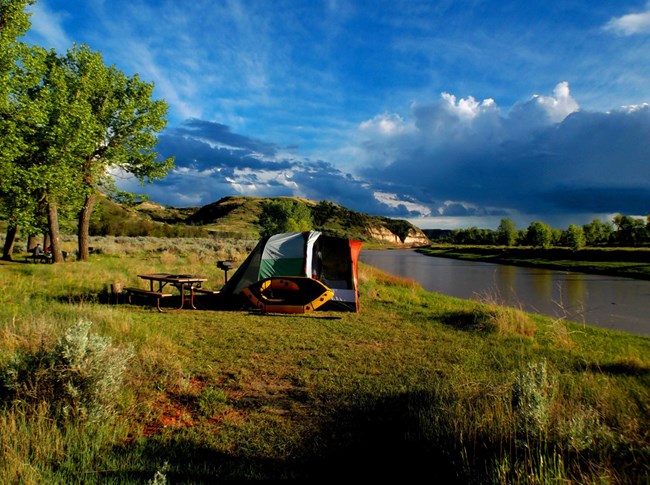
Nitrogen (N) and sulfur (S) compounds deposited from the air may have harmful effects on ecosystem processes. Healthy ecosystems can naturally buffer a certain amount of pollution, but once a threshold is passed the ecosystem may respond negatively. This threshold is the critical load, or the amount of pollution above which harmful changes in sensitive ecosystems occur (Porter 2005). N and S deposition change ecosystems through eutrophication (N deposition) and acidification (N + S deposition). Eutrophication increases soil and water nutrients which causes some species to grow more quickly and changes community composition. Ecosystem sensitivity to nutrient N enrichment at Theodore Roosevelt National Park (THRO) relative to other national parks is high (Sullivan et al. 2016); for a full list of N sensitive ecosystem components, see: NPS ARD 2019. Acidification leaches important cations from soils, lakes, ponds, and streams which decreases habitat quality. Ecosystem sensitivity to acidification at THRO relative to other national parks is moderate (Sullivan et al. 2016); to search for acid-sensitive plant species, see: NPSpecies.
From 2017-2019 total N deposition in THRO ranged from 4.9 to 5.4 kg-N ha-1 yr-1 and total S deposition ranged from 1.5 to 1.9kg-S ha-1 yr-1 based on the TDep model (NADP, 2018). See the conditions and trends website for park-specific information on N and S deposition at THRO.
Concentrations of ammonium in N deposition at THRO are relatively high to total N deposition (NPS 2018). This is often an indicator of nearby agricultural sources. Large power plants in Montana and North Dakota, nearby oil and gas well fields, and agriculture are significant sources of airborne N and S to the park. Air quality monitoring in THRO is important for assessing these impacts.
The high buffering capacity of soils and high concentrations of base cations and acid neutralizing capacity in surface waters at THRO indicate these ecosystems are not likely to be acidified by atmospheric deposition (Peterson et al. 1998). In support of this theory, Elevated S levels in lichens as compared to soil have been documented at the park (Bennett and Wetmore 2001).
Epiphytic macrolichen community responses
Epiphytic macrolichens grow on tree trunks, branches, and boles. Since these lichens grow above the ground, they obtain all their nutrients directly from precipitation and the air. Many epiphytic lichen species have narrow environmental niches and are extremely sensitive to changes in air pollution. Geiser et al. (2019) used a U.S. Forest Service national survey to develop critical loads of nitrogen (N) and critical loads of sulfur (S) to prevent more than a 20% decline in four lichen community metrics: total species richness, pollution sensitive species richness, forage lichen abundance, and cyanolichen abundance.
McCoy et al. (2021) used forested area from the National Land Cover Database to estimate the impact of air pollution on epiphytic lichen communities. Forested area makes up 52 km2 (18.1%) of the land area of Theodore Roosevelt National Park.
- N deposition exceeded the 3.1 kg-N ha-1 yr-1 critical load to protect N-sensitive lichen species richness in 100% of the forested area.
- S deposition was below the 2.7 kg-S ha-1 yr-1 critical load to protect S-sensitive lichen species richness in every part of the forested area.
For exceedances of other lichen metrics and the predicted decline of lichen communities see Appendices A and B of McCoy et al. (2021).
Additional modeling was done on 459 lichen species to test the combined effects of air pollution and climate gradients (Geiser et al. 2021). A critical load indicative of initial shifts from pollution-sensitive toward pollution-tolerant species occurred at 1.5 kg-N ha-1 yr-1 and 2.7 kg-S ha-1 yr-1 even under changing climate regimes.
Plant species response
Plants vary in their tolerance of eutrophication and acidification, and some plant species respond to nitrogen (N) or sulfur (S) pollution with declines in growth, survival, or abundance on the landscape. Horn et al. (2018) used the U.S. Forest Service national forest survey to develop critical loads of N and critical loads of S to prevent declines in growth or survival of sensitive tree species. Clark et al. (2019) used a database of plant community surveys to develop critical loads of N and critical loads of S to prevent a decline in abundance of sensitive herbaceous plant species. According to NPSpecies, Theodore Roosevelt National Park contains:
- 4 N-sensitive tree species and 37 N-sensitive herbaceous species.
- 7 S-sensitive tree species and 34 S-sensitive herbaceous species.
Mycorrhizal fungi community response
Many plants have a symbiotic relationship with mycorrhizal fungi (MF). Through the roots, the plants supply the fungi with carbon from photosynthesis and in exchange the MF enhance nutrient availability within soils, increase drought tolerance, and provide physical resistance to soil erosion (George et al., 1995; Cheng et al., 2021; Burri et al., 2013). Anthropogenic Nitrogen (N) deposition can disrupt this symbiotic relationship resulting in a shift from N sensitive to N tolerant mycorrhizal fungi and plant communities.
With increased N deposition to the soil, MF become less important for nutrient uptake and many plants will cease the exchange of nutrients altogether making them more vulnerable to stressors such as drought (Lilleskov et al., 2019). The CL-N for the shift in mycorrhizal community is 5-6 kg-N ha-1 yr-1 in coniferous forests and 10-20 kg-N ha-1 yr-1 broadleaf forests.
Theodore Roosevelt National Park has 52.9 km2 of coniferous forests, 78.2 km2 of broadleaf forests, and 16.7 km2 of mixed forests. Using the range in critical loads above, the minimum CL is exceeded in 0% of forested area and the maximum CL is exceeded in 0% of forested area based on 2019-2021 TDep Total N deposition
Change in N and S deposition from 2000 to 2021
The maps below show how the spatial distribution of estimated Total N and Total S deposition in THRO has changed from 2000-2002 to 2019-2021 (TDep MMF version 2022.02). Slide the arrows in the middle of the image up and down to compare N and S deposition between the two years (Yearly Data).
- Minimum N deposition increased from 3.2 to 3.4 kg-N ha-1 yr-1 and maximum N deposition decreased from 4.1 to 3.8 kg-N ha-1 yr-1.
- Minimum S deposition decreased from 1.5 to 0.9 kg-S ha-1 yr-1 and maximum S deposition decreased from 1.9 to 1.0 kg-S ha-1 yr-1.
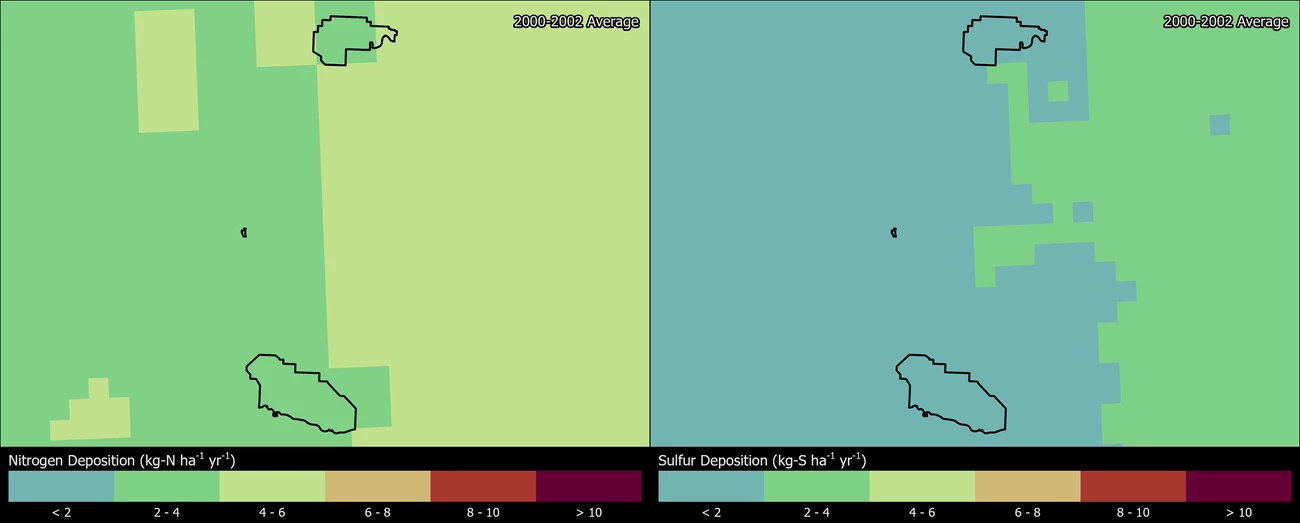
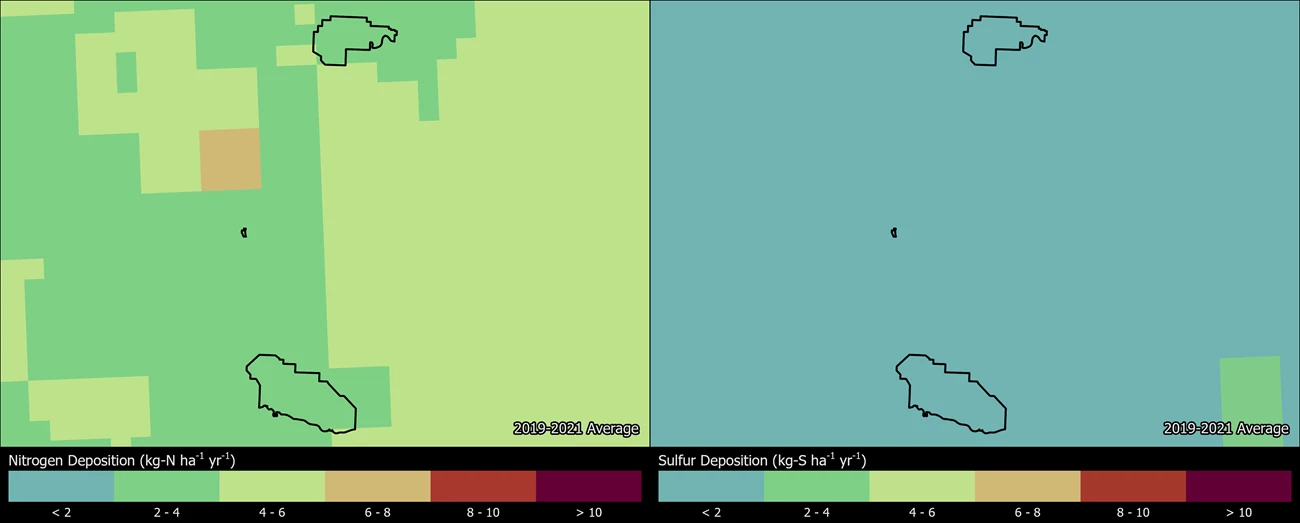
Persistent Pollutants
Pollutants like mercury and pesticides are concerning because they are persistent and toxic in the environment. These contaminants can travel in the air thousands of miles away from the source of pollution, even depositing in protected places like national parks. In addition, while some of these harmful pollutants may be banned from use, historically contaminated sites continue to endure negative environmental consequences.
When deposited, airborne mercury and other toxic air contaminants are known to harm wildlife like birds and fish, and cause human health concerns. Many of these substances enter the food chain and accumulate in the tissue of organisms causing reduced reproductive success, impaired growth and development, and decreased survival.
- No fish sampled at Theodore Roosevelt NP has mercury levels that exceeded the US EPA threshold for human consumption. Preliminary data from two sites in the park indicate an average fish mercury concentration of 0.036 ppm ww. Mercury concentrations in all 19 fish sampled were below the health benchmark established for human consumption (0.3 ppm ww) (Eagles-Smith et al. 2019). However, the data may not reflect the risk at other unsampled locations in the park. Fish consumption advisories may be in effect for mercury and other contaminants (NPS 2022).
- Mercury levels are elevated in lichens at Theodore Roosevelt NP compared to levels in soil at the park. This suggests at the atmosphere is a contributing source of mercury. The heavy metal cadmium and other elements have also been detected in lichens, which further indicates human-caused air pollution (Gough et al. 1985; Bennett and Wetmore 2000). Lichens are plants that might be sensitive to airborne pollutants and therefore can be used as indicators of urban pollution and point-source emissions like oil and gas wells.
Visibility
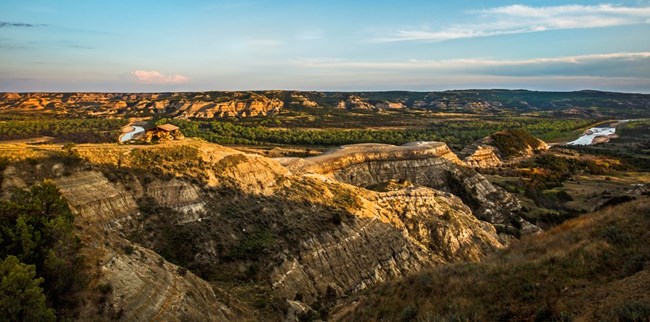
Many visitors come to Theodore Roosevelt NP to enjoy views of the rugged badlands terrain, wildlife, and other idyllic landscape scenes that charmed Theodore Roosevelt in the 1880s. Park vistas are sometimes obscured by haze, reducing how well and how far people can see. Visibility reducing haze is caused by tiny particles in the air, and these particles can also affect human health. Many of the same pollutants that ultimately fall out as nitrogen and sulfur deposition contribute to this haze. Organic compounds, soot, dust, and wood smoke reduce visibility as well. Significant improvements in park visibility have been documented since the 2000’s. Overall, visibility in the park still needs improvement to reach the Clean Air Act goal of no human caused impairment.
Visibility effects:
- Reduced visibility on some days due to human-caused haze and fine particles of air pollution;
- Reduction of the average natural visual range from about 145 miles (without the effects of pollution) to about 95 miles because of pollution at the park;
- Reduction of the visual range to below 50 miles on high pollution days.
Visit the NPS air quality conditions and trends website for park-specific visibility information. Theodore Roosevelt NP has been monitoring visibility since 2000. View a live air quality webcam, and explore air monitoring »
Ground-Level Ozone
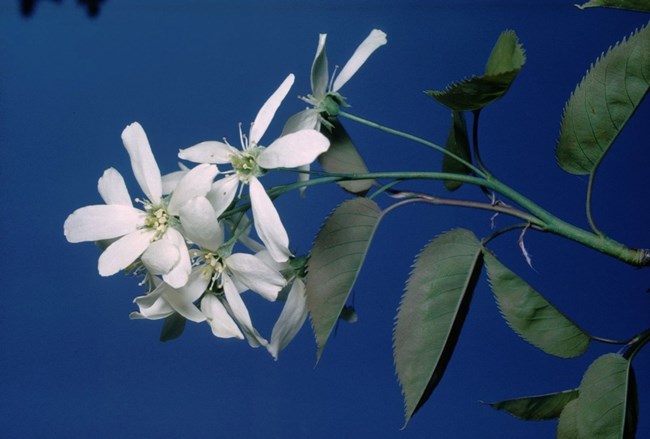
At ground level, ozone is harmful to human health and the environment. Ground-level ozone does not come directly from smokestacks or vehicles, but instead is formed when other pollutants, mainly nitrogen oxides and volatile organic compounds, react in the presence of sunlight.
Over the course of a growing season, ozone can damage plant tissues making it harder for plants to produce and store food. It also weakens plants making them less resistant to disease and insect infestations. Some plants are more sensitive to ozone than others. Ozone-sensitive plants in Theodore Roosevelt NP include Populus tremuloides (quaking aspen), Prunus virginiana (chokecherry), and Amelanchier alnifolia (saskatoon serviceberry). Assessments have not documented ozone injury to any sensitive vegetation in the park (Peterson et al. 1998). Search for more ozone-sensitive plant species found at Theodore Roosevelt NP.
Visit the NPS air quality conditions and trends website for park-specific ozone information. Theodore Roosevelt NP has been monitoring ozone since 1999. View live ozone and meteorology data and explore air monitoring »
Explore Other Park Air Profiles
There are 47 other Park Air Profiles covering parks across the United States and its territories.
References
Bennett, J.P. and Wetmore, C.M. 2001. 16-year trends in elements of lichens at Theodore Roosevelt National Park, North Dakota. Science of the Total Environment 263: 231–241. https://irma.nps.gov/DataStore/Reference/Profile/569870
Burri, K., C. Gromke, and F. Graf. "Mycorrhizal fungi protect the soil from wind erosion: a wind tunnel study." Land Degradation & Development 24.4 (2013): 385-392.
Cheng, Shen, et al. "Elucidating the mechanisms underlying enhanced drought tolerance in plants mediated by arbuscular mycorrhizal fungi." Frontiers in Microbiology 12 (2021): 809473.
Clark, C.M., Simkin, S.M., Allen, E.B. et al. Potential vulnerability of 348 herbaceous species to atmospheric deposition of nitrogen and sulfur in the United States. Nat. Plants 5, 697–705 (2019). https://doi.org/10.1038/s41477-019-0442-8
Cover Database. ISPRS Journal of Photogrammetry and Remote Sensing. 162. 184-199. 10.1016/j.isprsjprs.2020.02.019.
Eagles-Smith, CA, JJ Willacker, CM Flanagan Pritz, AC Ellsworth. 2019. Total Mercury Concentrations in Fish from 31 National Parks, USA, 2015-2016. USGS Sensitive Data Release. https://irma.nps.gov/DataStore/Reference/Profile/2260288
Geiser, Linda & Nelson, Peter & Jovan, Sarah & Root, Heather & Clark, Christopher. (2019). Assessing Ecological Risks from Atmospheric Deposition of Nitrogen and Sulfur to US Forests Using Epiphytic Macrolichens. Diversity. 11. 87. 10.3390/d11060087.
Geiser, Linda & Root, Heather & Smith, Robert & Jovan, Sarah & Clair, Larry & Dillman, Karen. (2021). Lichen-based critical loads for deposition of nitrogen and sulfur in US forests. Environmental Pollution. 291. 118187. 10.1016/j.envpol.2021.118187.
George, Eckhard, Horst Marschner, and Iver Jakobsen. "Role of arbuscular mycorrhizal fungi in uptake of phosphorus and nitrogen from soil." Critical reviews in biotechnology 15.3-4 (1995): 257-270.
Gough, L.P., Peard, J.L., Severson, R.C., Jackson, L.L., Arbogast, B.F., Motooka, J.M., Snow, S., Engleman, E.E., and Bennett, J.P. 1985. Baseline elemental-composition of selected plants and soils, and assessment of airborne element contamination, Theodore Roosevelt National Park, North Dakota. US Department of the Interior, Geological Survey, Reston, VA. Open-File Report 85–251. Available at: https://irma.nps.gov/DataStore/Reference/Profile/13602
Horn KJ, Thomas RQ, Clark CM, Pardo LH, Fenn ME, Lawrence GB, et al. (2018) Growth and survival relationships of 71 tree species with nitrogen and sulfur deposition across the conterminous U.S.. PLoS ONE 13(10): e0205296. https://doi.org/10.1371/journal.pone.0205296
Lilleskov, Erik A., et al. "Atmospheric nitrogen deposition impacts on the structure and function of forest mycorrhizal communities: a review." Environmental Pollution 246 (2019): 148-162.
McCoy K., M. D. Bell, and E. Felker-Quinn. 2021. Risk to epiphytic lichen communities in NPS units from atmospheric nitrogen and sulfur pollution: Changes in critical load exceedances from 2001‒2016. Natural Resource Report NPS/NRSS/ARD/NRR—2021/2299. National Park Service, Fort Collins, Colorado. https://doi.org/10.36967/nrr-2287254.
[NADP] National Atmospheric Deposition Program. 2018. NTN Data. Accessed January 20, 2022. Available at http://nadp.slh.wisc.edu/NADP/
[NPS] National Park Service. 2022. Fish Consumption Advisories. https://www.nps.gov/subjects/fishing/fish-consumption-advisories.htm
Peterson, D.L., Sullivan, T.J., Eilers, J.M., Brace, S., Horner, D., Savig, K. and Morse, D. 1998. Assessment of air quality and air pollutant impacts in national parks of the Rocky Mountains and northern Great Plains. Chapter 7. Theodore Roosevelt National Park. Report NPS/CCSOUW/NRTR-98/19. National Park Service, Air Resources Division, Denver, CO. Available at https://irma.nps.gov/DataStore/Reference/Profile/11733.
Porter, E., Blett, T., Potter, D.U., Huber, C. 2005. Protecting resources on federal lands: Implications of critical loads for atmospheric deposition of nitrogen and sulfur. BioScience 55(7): 603–612. https://doi.org/10.1641/0006-3568(2005)055[0603:PROFLI]2.0.CO;2
Sullivan, T. J. 2016. Air quality related values (AQRVs) in national parks: Effects from ozone; visibility reducing particles; and atmospheric deposition of acids, nutrients and toxics. Natural Resource Report NPS/NRSS/ARD/NRR—2016/1196. National Park Service, Fort Collins, CO.
Last updated: August 6, 2024
